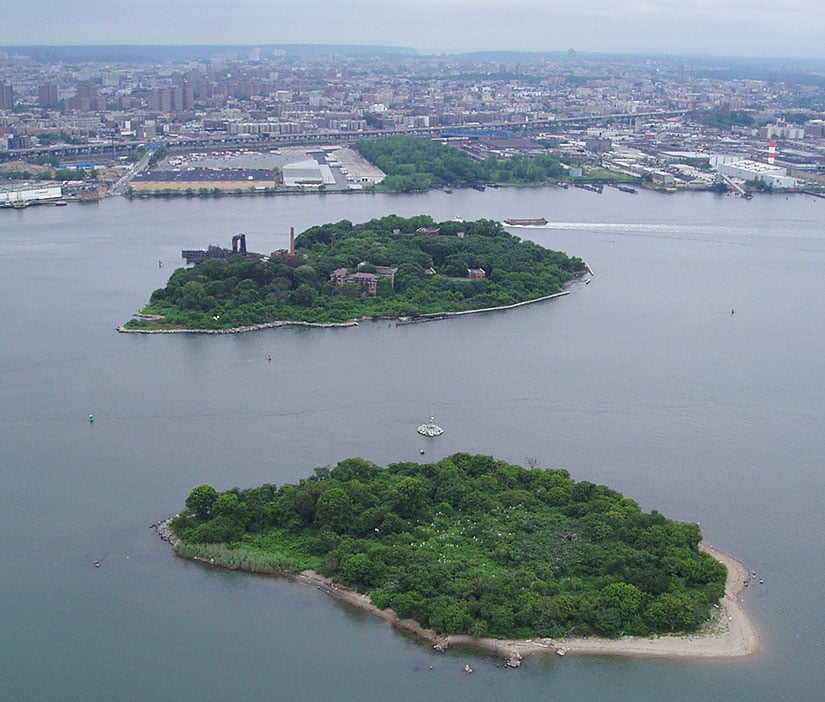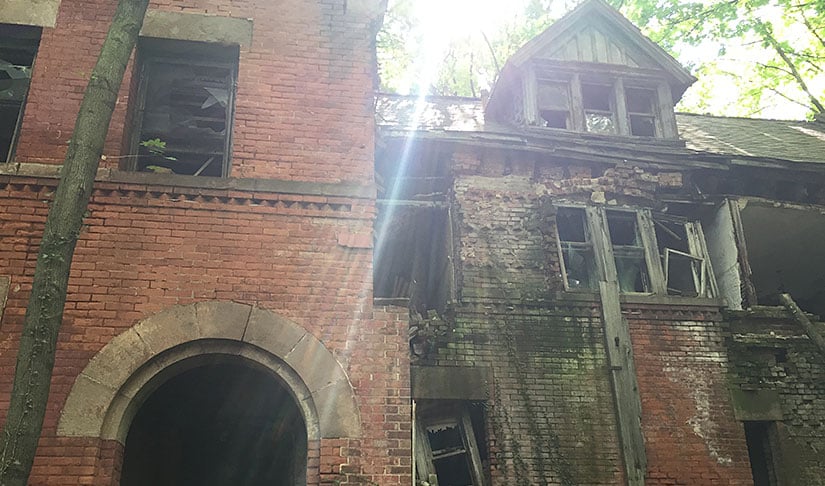New York's Deserted Island | New York
Less than a mile from Manhattan in the middle of the East River is North Brother Island, the former home of a notorious typhoid hospital. Today the hospital lies in ruins, and nature is taking over.
Deserted by humans more than 50 years ago, North Brother Island has become a desolate jungle, despite its uber-urban location.
Situated in New York’s East River between the Bronx and Riker’s Island, the 20-acre island once housed a variety of 19th and 20th century human communities. Riverside Hospital brought the first inhabitants to North Brother Island in 1855. The island operated as a quarantine station for patients suffering from infectious diseases like tuberculosis, smallpox, measles, and typhoid fever until 1943.
Twenty-five dormant buildings on the former Riverside site are now being swallowed up by plants and trees. A building that once served as a Tuberculosis Pavilion for Riverside Hospital is crumbling. With trees growing through its shattered windows, and vines weaving their way in-and-around the building’s skeletal frame, the entire structure is under danger of collapse.
Mary Mallon, better known as “Typhoid Mary,” famously resided at Riverside as a quarantine patient for 26 years in the early 1900s. Identified by the health department as the first asymptomatic carrier of typhoid in the United States, Mallon—who worked as a cook in the food industry—was deemed responsible for multiple outbreaks of typhoid and was banished to Riverside in 1907.
Citing her own immunity to the disease, Mallon sued the health department and was released from Riverside in 1910—under the conditions that she would remain in close contact with the department and would never work in the food industry again. Instead, Mallon lost touch with authorities and was discovered to be working as a cook under a false name. Mallon was re-captured in 1915 and permanently shipped back to Riverside, where she died at the age of 69 in November 1938.

Riverside shut its doors in 1941, and with the country facing a post-World War II housing shortage, North Brother served as a housing community for veteran families from 1946-51. Later, it became an adolescent drug rehabilitation center from 1952-64—the last time humans lived on the island.
“The island has always been a fully functioning community,” said Kristy King, director of forest restoration at the New York City Department of Parks & Recreation. “Now it is its own little community still, but for native plants and wildlife.”
Once people moved off of North Brother, new plant and bird species started colonizing the island, including non-native invasive plant species like English ivy and kudzu, and native New York plant species like grape ferns and sugar maple trees. While these plant species are contributing to the destruction of the island’s human relics, they are providing valuable habitat for shorebirds, including gulls, herons, and egrets.
“What the island offered these birds was—it wasn’t uninhabited, so it was ideal,” said Susan Elbin, director of conservation and science at the New York City Audubon. “It had buildings which were structure, it had trees which were structure, and it had a whole river full of fish waiting to be eaten. So it provided everything that the bird needed: it provided safety, food, and then a place that wasn’t disturbed.”
The NYC Parks Department took ownership of North Brother Island in 2001 and has been working with environmental agencies to protect the island as a designated bird sanctuary, along with its smaller neighbor South Brother Island. Recent restoration efforts include managing and removing North Brother’s invasive plants, and planting native shrubs and trees, including sumac, dogwood, and American holly.
While there have been recent discussions by members of the New York City Council to give residents easier access to North Brother Island, it is currently against the law to trespass there. The Parks Department does grant limited legal permits to visit North Brother under special conditions, but getting to the island is not easy. A boat must be chartered, but because North Brother’s original passenger ferry dock has eroded, it is a challenge to get on and off the boat.
North Brother Island may have slipped out of human hands, but nature now has a firm grip, and it does not appear to be letting go anytime soon.
“It’s wildlife habitat as a natural space within our dense urban landscape,” King said. “The value that it provides in that way I think is great.”

— Sean Keenehan






